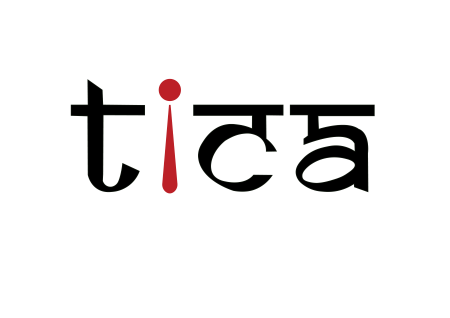
Delhi Contemporary Art Week 2025 | DCAW 2025 | A Confluence of Voices, Practices, and Perspectives
Share
On a late August evening in Delhi, Bikaner House once again became the city’s beating cultural heart as the eighth edition of Delhi Contemporary Art Week (DCAW 2025) opened on August 31, drawing artists, gallerists, students, collectors, and wanderers into its airy corridors.
Spread across the Centre for Contemporary Art at Bikaner House—a former princely residence now reshaped into a hub for dialogue on contemporary Indian art—the event highlights why DCAW has become central to Delhi’s cultural calendar. Six women-led galleries—Blueprint 12, Exhibit 320, Gallery Espace, Latitude 28, Shrine Empire, and Vadehra Art Gallery—joined forces, creating a collaborative platform for South Asian art and voices without a single curatorial agenda.
DCAW 2025 Opening Walkthrough

The opening walkthrough of Delhi Contemporary Art Week 2025 began at six in the evening. Warm light spilled across Bikaner House’s arched windows as visitors explored ground-floor halls, encountering works of various scales, mediums, and moods. The atmosphere was charged with recognition, introductions, and curiosity—punctuated by silences and focused attention before standout pieces.
DCAW is renowned not for spectacle, but for its emphasis on proximity—placing audiences in direct dialogue with the artists’ practice. This August, dialogue unfolded in new and unexpected ways.
Featured Artists and Their Stories
Paribartana Mohanty, whose work has long explored the intersections of history, landscape, and the politics of memory, spoke about narrative as a means of reconciling both personal and collective truths. His practice often moves between painting and multimedia, but what anchors it is a sense of restlessness—an urgency to reflect on the socio-political churn that defines our times. In his words, art is less an act of representation than a way of “listening to what is already present, yet often ignored.”
Purvai Rai’s works invited a different kind of encounter. Rooted in sensitivity to form and material, her practice leans towards the intimate—gestures that hold memory. When asked about her approach, she spoke: art, for her, is about attention. It is about seeing what is overlooked and granting it presence. In the bustle of the fair, her works slowed the gaze, drawing viewers into moments of stillness.
Akshay Bhoan’s contributions added yet another inflexion. His explorations of identity, selfhood, and the layered architectures of memory created works that felt both grounded and elusive. He described his practice as a constant negotiation between what is visible and what resists articulation.
Shailesh BR: Known for installations and concept art, Shailesh dissolves boundaries between familiar and strange, championing experimentation and unlearning with each work.
Collaborative Curatorial Spirit
Moving between galleries, visitors experience a fluid continuum—distinct practices forming a larger conversation about South Asian contemporary art. Delhi Contemporary Art Week’s power is its refusal to be reduced to a single theme: six galleries curate, side by side, welcoming difference and embracing convergence.
Some pieces confront the political present; others embody private intimacy, together reflecting Delhi’s cultural plurality. Recurrent motifs—ecology, archives, memory—surface organically, shaped by the artists' given space to speak their truths.
Why DCAW 2025 Matters
Delhi Contemporary Art Week 2025 is more than an exhibition; it’s a living, collaborative classroom. Students, collectors, and artists encounter evolving practices and dialogue. Amid large-scale art fairs and international shows, DCAW retains intimacy, reminding everyone that contemporary art in India is about connection, questioning, and lived experience.
And perhaps that is why Shailesh BR’s words at the end of the walkthrough lingered. They seemed to speak not only to his own work, but to the ethos of the week itself:
“Don’t frame yourself in one particular box. Just go out of the box. So then maybe new things can come. It’s a new experience.”
Plan Your Visit to Delhi Contemporary Art Week 2025

Delhi Contemporary Art Week 2025 is on view at Bikaner House, New Delhi, from August 31 to September 4, 2025, open daily from 11:00 AM to 7:00 PM.
Experience six leading contemporary art galleries, dozens of Indian and South Asian artists, and the lively art scene Delhi has to offer. If you’re in the city, don’t miss this chance to discover the richness of contemporary art at Delhi Contemporary Art Week 2025.
The eighth edition of Delhi Contemporary Art Week (DCAW 2025) at Bikaner House brings together a vibrant assembly of six women-led galleries: Blueprint 12, Shrine Empire, Gallery Espace, Vadehra Art Gallery, Latitude 28, and Exhibit 320. This year’s event features a diverse roster of South Asian contemporary artists, representing a wide range of mediums and practices. Featured artists at Blueprint 12 include Akshay Bhoan, Vasundhara Sell Amuthu, Tanvi Ranjan, Anilakuma Govindappa, Zoya Chaudhary, and Mekhala Bahl.
Shrine Empire presents works by Sangita Maity, Tayeba Begum Lipi, Neerja Kothari, Shruti Mahajan, Paribartana Mohanty, Awdhesh Tamrakar, Sarker Protick, Raj Jariwala, Sajan Mani, Minal Damani, Samanta Batra Mehta, Arun Dev, and Anoli Perera.
Gallery Espace’s curatorial theme, "Multiples," features Ashok Ahuja, Birendar Yadav, Chintan Upadhyay, Gogi Saroj Pal, Kishor Shinde, Manisha Gera Baswani, Mekhala Bahl, Puneet Kaushik, Purvai Rai, Sharad Sonkusale, Sheetal Gattani, and Suddhasatwa Basu.
Vadehra Art Gallery’s lineup includes Astha Butail, Sunil Gupta, Shilpa Gupta, Gigi Scaria, Shailesh BR, Srimanti Saha, Sudhir Patwardhan, and Atul Dodiya.
At Latitude 28, the audience encounters works by Anupama Alias Anil, Farhat Ali, Firi Rahman, Gopa Trivedi, Hasmukh Makwana, Jayati Bose, Juhikadevi Bhanjdeo, Ketaki Sarpotdar, Pratul Dash, Shalina Vichitra, Shubham Kumar, Viraj Khanna, and Vinita Sharma.
